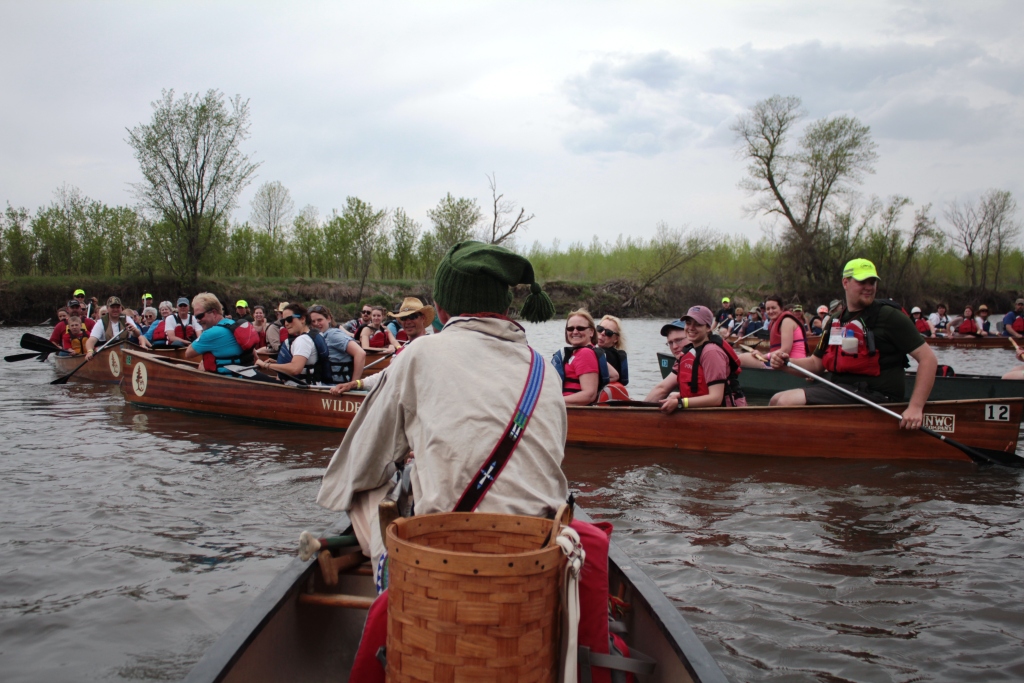River Responsibilities

By: Sean Fleming
The Water Trails crew, the crew I serve on, has begun our river work over the last month bringing us to places such as Cambridge to work on the Rum River, Sauk Rapids to work on the Sauk River, to Duluth to undergo our whitewater training on the St. Louis River.
I’m especially proud to work on the Water Trails crew because this year marks the 50th anniversary of the Minnesota Water Trails. Four rivers, the Minnesota, the St. Croix, the Big Fork and the Little Fork were originally designated as Water Trails in 1963 and over the last fifty years that list has grown to 33 rivers. To celebrate the anniversary, the DNR partnered with Wilderness Inquiry and CURE (Clean Up the River Environment) to host a celebration on the Minnesota River in Granite Falls. Wilderness Inquiry provided large cedar-strip canoes for festival-goers to paddle down about three miles of the river. Every few hundred yards, community members in period garments staged scenes from the river’s history on shore while the audience watched from their canoes on the river.
After three full days of preparation fixing campsites, clearing a few snag trees, transporting picnic tables, splitting firewood and building a portage, I was informed the evening before the actual celebration that my responsibility the following day would be to act as “Jacques the Voyageur’s” paddling partner. Jack Driscoll (Jacques when he’s in character) has spent thirty years as a voyageur re-enacter and educator giving symposiums at elementary schools in Minnesota. Corps members develop a wide skill set from the varied nature of our work, and that sometimes requires thespian talents as well. I donned a linen shirt, sash, scarf, tuque, pistol and tomahawk that Jacques handed me, and then we headed onto the Minnesota where we descended on river-goers and accosted them in French accents for scaring ducks away.
While waiting for the canoers to arrive, Jack and I settled our own canoe into an eddy and he filled me in on the voyageurs’ lifestyle—the pemmican they ate, how they hunted for game and the fact that most voyageurs couldn’t swim, making them terrified of capsizing.
The voyageurs were businessmen, making a living through trapping and hunting. Nearly all of the historical figures laced along the river represented people seeking resources from that river—gold miners, loggers, clam fishermen and fur trappers. But after the 1950s a paradigm shift occurred and the notable historical figures became people wanting to preserve those resources—people like Clyde Ryberg, who was a driving force behind the creation of the Water Trails program. It interests me that suddenly, in the last 50 years, the purpose of being on a river for the average citizen has become less about material rewards and more about rewarding the spirit.